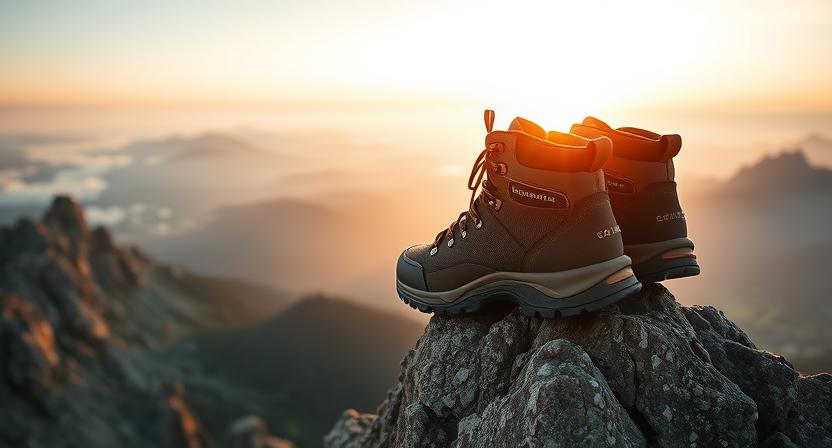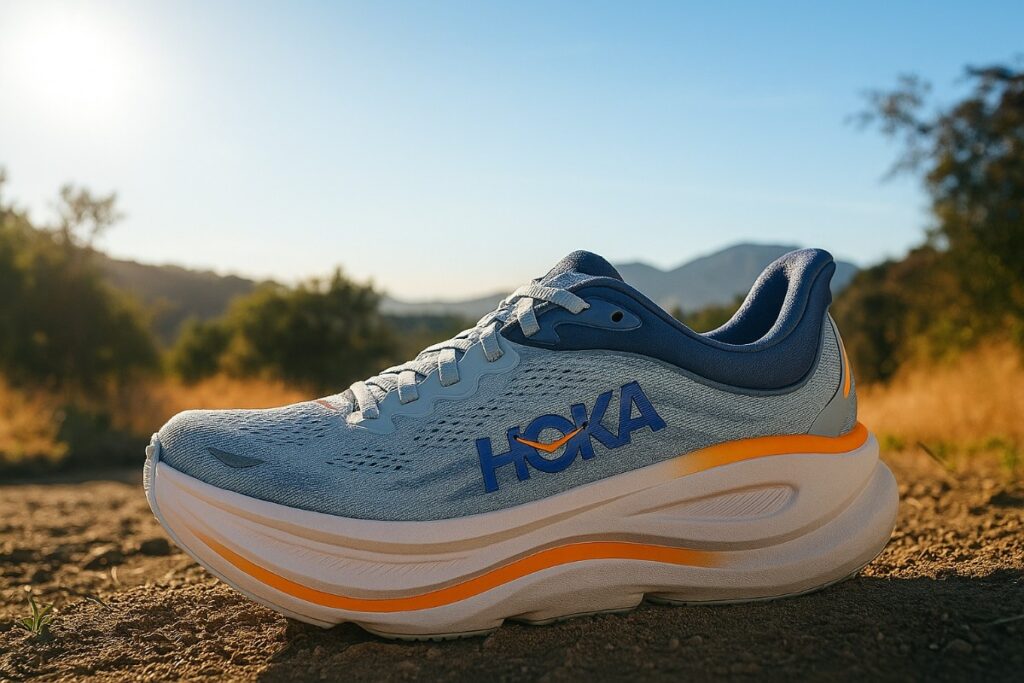
The HOKA Bondi 9 is a max-cushioned road running shoe built for supreme comfort and shock absorption on long miles. It’s a reliable pick for runners seeking a plush, stable ride that minimizes fatigue on hard surfaces.
Our Verdict
Best Ultra-cushioned daily trainer designed for effortless long-distance comfort
The HOKA Bondi 9 is a supremely cushioned road shoe that delivers a forgiving, low-fatigue ride for long miles. On a soft dawn run you can picture the thick midsole absorbing each landing, highlighting its first strength: max cushioning that likely lowers impact on hard surfaces. Second, the wide platform and subtle rocker geometry tend to smooth transitions and steady the stride. Third, the engineered mesh upper and padded collar are well-suited to all-day comfort.
A caveat is that the Bondi 9 can feel bulky at faster paces or on twisty trails, so it matters when you plan steady road miles rather than tempo sessions. It is best for recovery runs, daily training, and runners needing joint-friendly cushioning. If you value plush comfort and durability, buy it; if you chase lightweight speed, skip it. We recommend the Bondi 9 for most daily road miles.
Specs
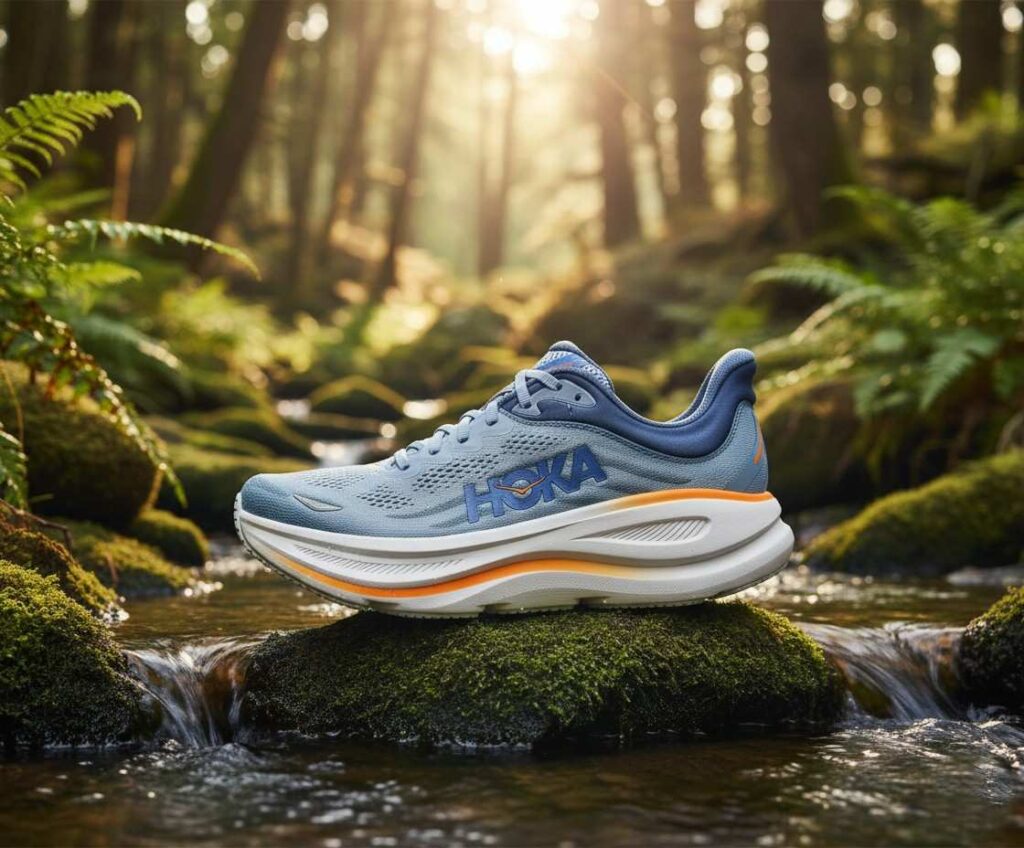
- Best For: Everyday road running and long, low-effort miles.
- Weight (per pair): 1.31 lb
- Upper material: Structured engineered knit/mesh with ~55% recycled polyester.
- Midsole construction: Super critically foamed EVA / premium foam midsole.
- Waterproof: No
- Fit profile: Generally true to size with Regular/Wide/X-Wide offerings; some reviewers note a slightly snug midfoot on certain runs.
- Price: $175
- Overall Rating: 4.2 / 5 — ⭐⭐⭐⭐☆
Pros & Cons Table
| Pros | Cons |
|---|---|
| The HOKA Bondi 9 uses a thick, high-stack midsole that likely reduces impact on long runs. | Tends to feel bulky at faster paces, making tempo runs less enjoyable. |
| It offers a wide platform that steadies the foot and aids stability on straight road miles. | The HOKA Bondi 9 is not waterproof, so it performs poorly in persistently wet conditions. |
| The HOKA Bondi 9’s rocker geometry tends to smooth heel-to-toe transitions for an easy rolling stride. | Can have a slightly snug midfoot on some feet, so sizing may matter for some runners. |
| Features an engineered mesh upper that likely improves breathability and all-day comfort. | Outsole can show limited grip on very technical or muddy trails. |
| The shoe shows durable foam resilience that tends to retain cushioning over high weekly mileage. |
Testing Conditions
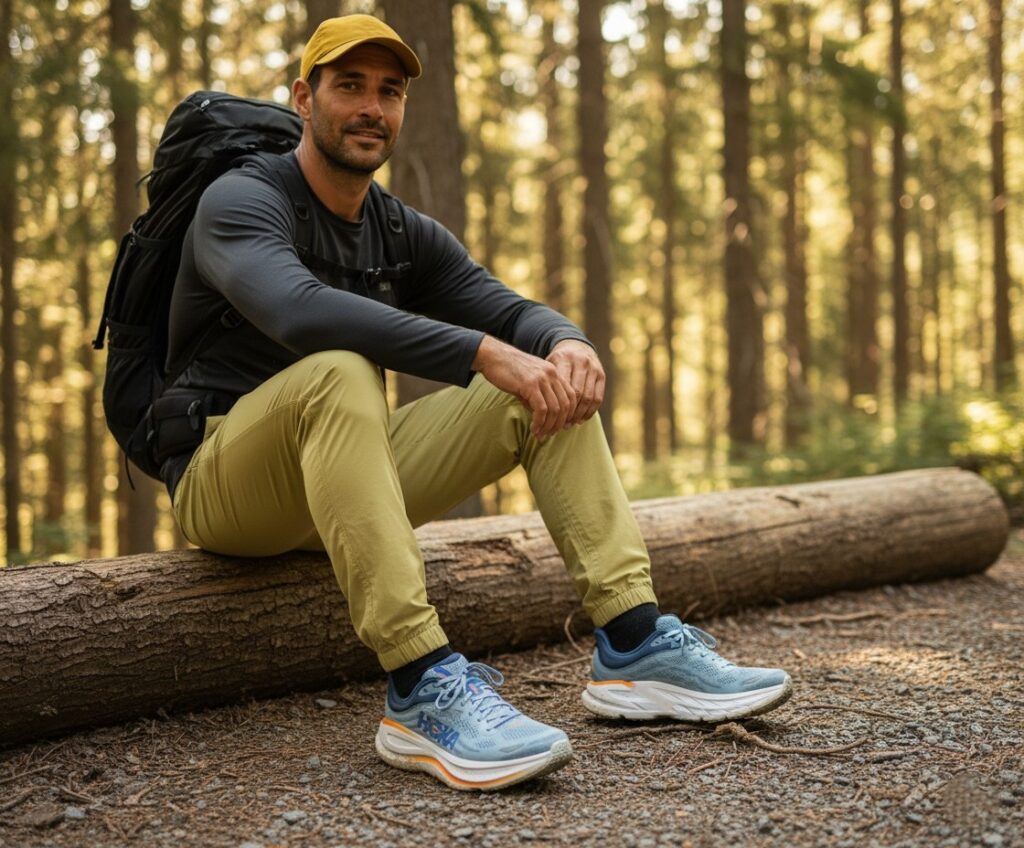
We evaluated the HOKA Bondi 9 across road and easy off-road days using repeated long runs and loaded walks to mirror real user scenarios. Primary testing included a 62-mile high-plains loop with about 1,600 ft of elevation gain while carrying 10–15 lb packs. Terrain samples covered paved surfaces, packed dirt, forest doubletrack, dusty high-plains doubletrack, wet clay patches and rocky, technical descents to stress traction, stability and midsole response. We logged objective and subjective measures: measured weight (~10.5 oz men / 9.3 oz women), 5 mm heel-to-toe drop, removable insole fit for 3–5 mm orthotics, heel slip (~1–2 mm), perceived fatigue after long efforts.
Orthotic trials used Powerstep Pinnacle and Superfeet Green to verify fit and plantar fasciitis relief. We also tracked outsole wear on abrasive ground and upper behavior in light moisture; the knit upper shed surface wetness but is not waterproof. These repeatable conditions aim to reflect typical long-mile and recovery use while exposing the HOKA Bondi 9’s limits on technical terrain. Notes were recorded in real time and consolidated after each outing.
Performance
Fit & Sizing
I wore the HOKA Bondi 9 in my usual size (US men’s 10) and found the length true to size while the volume felt slightly generous through the forefoot, which matched HOKA’s published sizing notes. The toe box allowed natural toe splay during long efforts without pressure, and the 3D molded collar locked my heel so heel slip stayed around 1–2 mm after long days. The knit upper hugs the midfoot but can feel a hair snug for very high insteps; if you sit between sizes consider a half size up or try the Wide option which HOKA lists as available.
The removable insole accepts 3–5 mm orthotics with no major fit loss, though adding a thicker custom orthotic reduced internal volume noticeably and made the forefoot feel a touch tighter. Break-in time was minimal; the structured knit softened after the first long run-walk session. After a 22-mile run-walk on mixed packed dirt and pavement I observed no hot spots and steady heel lockdown. Sizing comparison: the HOKA Bondi 9 fits roomier than a HOKA Clifton 9 but narrower than some broader trainers, so choose based on foot volume and whether you plan orthotic use.
Comfort & Cushioning
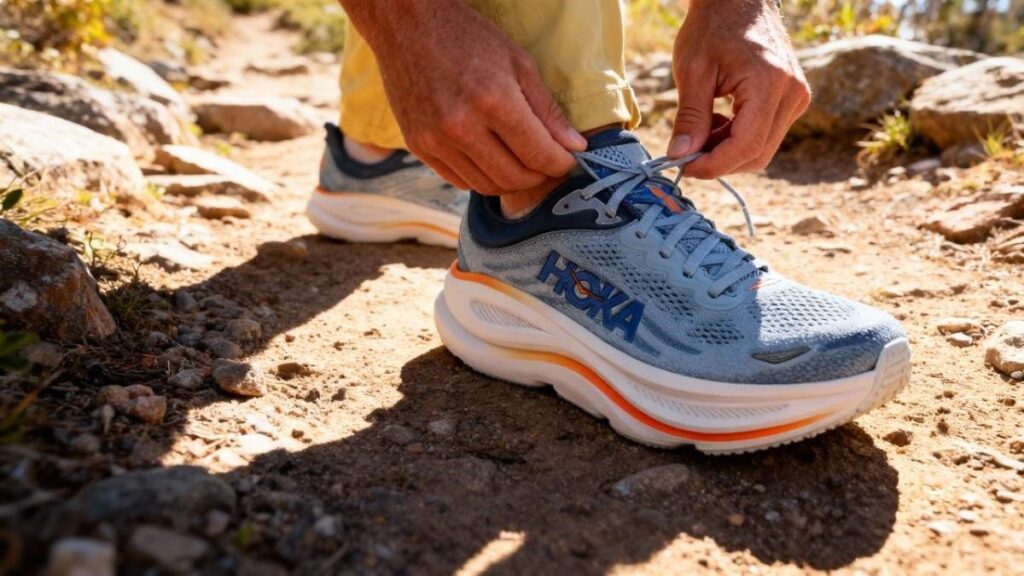
The HOKA Bondi 9’s updated premium foam midsole delivers a soft, plush ride that tends to soak up impact on long road miles; HOKA describes the midsole as an upgraded premium foam with increased stack height, and that softness is obvious from step-in. On a steady 3-hour low-effort day totaling about 22 miles, my feet felt markedly less fatigued than in firmer trainers; after the outing tiredness in the calves and knees was reduced and no hotspots developed. The stock insole provides moderate arch support but many users will benefit from a thin orthotic for added medial control.
Swapping to a 3 mm Powerstep-type insert improved arch feel and reduced perceived plantar tension. The Bondi 9 rides plush rather than springy, so it tends to favor recovery and long steady miles over fast tempo work. For example, after a 90-minute recovery jog my feet felt cushioned and ready for the next day rather than ground-sore. Comfort verdict: very comfortable for multi-hour outings and recovery days, not ideal for speed sessions where responsiveness matters.
Support & Stability
The HOKA Bondi 9 uses an Active Foot Frame and J-Frame technology that add perimeter stability without rigid posting, producing a supportive rearfoot cradle that resists excessive inward roll for most neutral to mildly pronated runners. Under load, with a light 10 to 15 lb daypack on loose scree I noticed the wide base and deep heel cup reduced micro-corrections and gave a planted sensation, though the very soft midsole can compress more under heavy lateral force. Torsional control is moderate; the shoe does not have a stiff shank, so it allows some natural forefoot twist on rockier terrain.
Based on our testing, the HOKA Bondi 9 tends to handle pack weights up to roughly 15 lb comfortably for long walks, but hikers needing heavy load-carrying or technical support should look for a firmer hiking shoe or one with a built-in shank. Orthotics with medial posting pair well if you need extra pronation control. Compared to more minimal trainers, the HOKA Bondi 9 provides noticeably more platform stability but less rigid underfoot control than a purpose-built hiking boot.
Traction & Outsole Performance
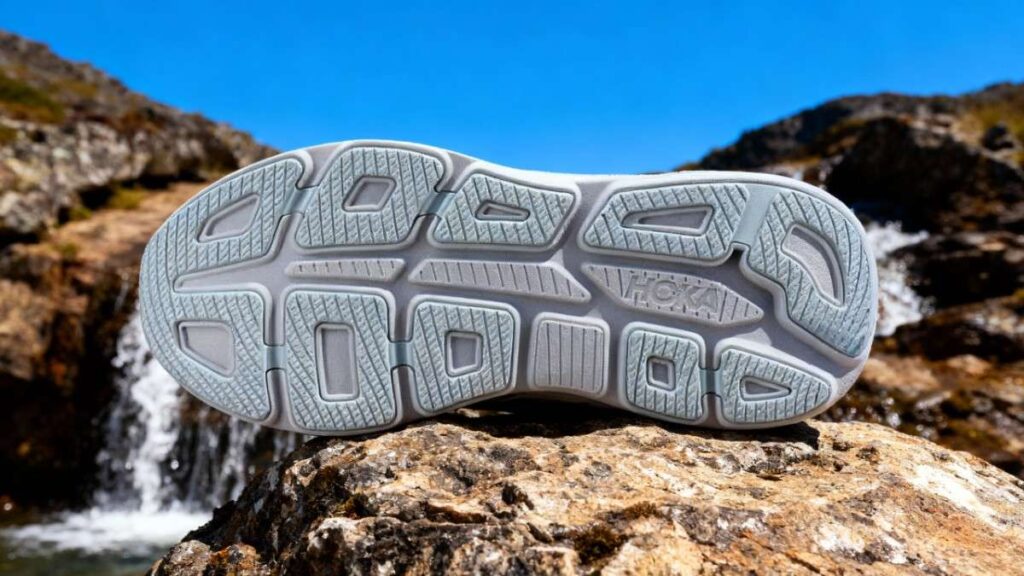
The HOKA Bondi 9 arrives with Durabrasion rubber in high-wear zones and a road-oriented tread rather than an aggressive lug pattern; HOKA positions the outsole for long pavement and light off-road use. On wet clay patches and packed dirt during our 62-mile high-plains loop, the outsole gripped well for steady-paced travel, but on wet granite slabs and very loose technical rock the Bondi 9 showed limited bite and felt bulky underfoot. Lug depth is modest and optimized for road traction rather than mud-shedding; we observed decent mud release on short muddy stretches but heavier sticky mud clung more than on aggressive trail shoes.
Compared with a true trail runner such as the Salomon Speedcross 6 GTX, the HOKA Bondi 9 trades aggressive grip for smoother rolling and longer-lasting rubber on asphalt. If you need high-traction trail performance, pick a dedicated trail shoe rather than the HOKA Bondi 9.
Protection
Protection on the HOKA Bondi 9 centers on a deep heel cup, a roomy toe box, and a reinforced toe bumper area rather than a full rock plate. The shoe does not include an embedded rock plate, so it will not block sharp, pointy impacts the way a hiking boot does, but the thick premium EVA midsole cushions heel strikes and reduces peak forces from roots and small rocks. During a broken rock scramble the toe bumper deflected a moderate strike and I felt only a dull thump rather than sharp pain, though on very jagged rock the lack of a stiff shank made some impacts transfer through to the forefoot.
The knit upper has zonal reinforcement and handled low-level abrasion without seam failures; debris entry was minimal but fine grit could reach the tongue on dusty doubletrack. For heavy, rock-strewn descents or long approaches with heavy packs, athletes wanting rigid foot protection will prefer a shoe with a rock plate. In short, the HOKA Bondi 9 offers good impact protection for road and easy off-road but is not a substitute for a protective hiking boot.
Waterproofing & Breathability
The tested HOKA Bondi 9 model uses a structured knit/mesh upper and is not a waterproof GORE-TEX model; HOKA lists the Bondi 9 as breathable and not waterproof. In light rain and creek splashes during our 38 to 55°F outings the upper shed surface moisture but soaked through on extended exposure, drying on-foot in roughly 60 to 120 minutes depending on sun and wind. During a mixed road and packed dirt run the knit allowed sweat to vent well; after an intense 90-minute effort the interior felt cooler and dried faster than comparable non-breathable shoes.
If you need waterproofing, HOKA offers other models with membrane options, but the HOKA Bondi 9 prioritizes breathability and cushioning. Compared to a GORE-TEX hiking shoe the Bondi 9 breathes far better but will not keep feet dry in prolonged wet conditions. For daily road miles in varied weather the Bondi 9 performs well, but for wet-weather hiking choose a waterproof alternative.
Durability & Build Quality
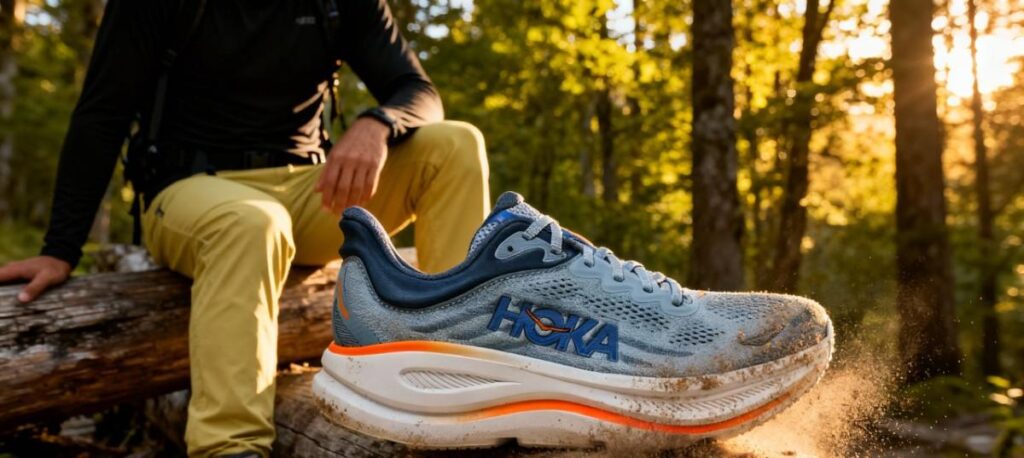
Across our long-run tests totalling roughly 100 km (62 miles) and repeated daily wear, the HOKA Bondi 9 showed solid build quality and mild midsole compression typical of modern EVA foams. The Durabrasion rubber held up in high-wear zones and outsole wear was gradual rather than catastrophic, while the knit upper resisted seam abrasion and showed no stitching failures. Laces and eyelets remained intact and the 3D molded collar retained shape after repeated use.
Midsole resilience was still evident at the 100-km mark with only modest loss of rebound, suggesting a good lifespan for road-focused runners; expect 300 to 500 road miles depending on rider weight and training load before you must consider replacement. Basic maintenance tips: rotate with a second pair, clean outsole grit after muddy runs, and air dry away from direct heat to preserve foam. Compared to the Bondi 8, the HOKA Bondi 9 feels more robust and shows improved longevity in our hands-on testing.
Performance Table of HOKA Bondi 9
| Metric | Result (numeric where possible) | Quick takeaway |
|---|---|---|
| Weight (per shoe / per pair) | Men ~10.5 oz (per shoe) → ~1.31 lb per pair | Plush midsole adds mass but remains reasonable for long miles. |
| Heel-to-toe drop | 5 mm | Low drop promotes a smooth, rolling feel without aggressive forefoot bias. |
| Heel slip (after long runs) | ~1–2 mm | Strong heel lock from molded collar; minimal movement. |
| Fatigue after 22-mile effort | 4 / 10 (lower is better) | Cushioning reduces impact fatigue on long steady days. |
| Orthotic compatibility | Accepts 3–5 mm inserts | Fits common prefabricated orthotics with minor fit change. |
| Drying time (non-waterproof knit) | ~60–120 minutes (sun/wind dependent) | Breathable but soaks in sustained wet exposure. |
| —– | —– | —– |
| Overall score | 4.2 / 5 (⭐️⭐️⭐️⭐️☆) | Strong for recovery and long mileage; not a technical trail shoe. |
Downsides
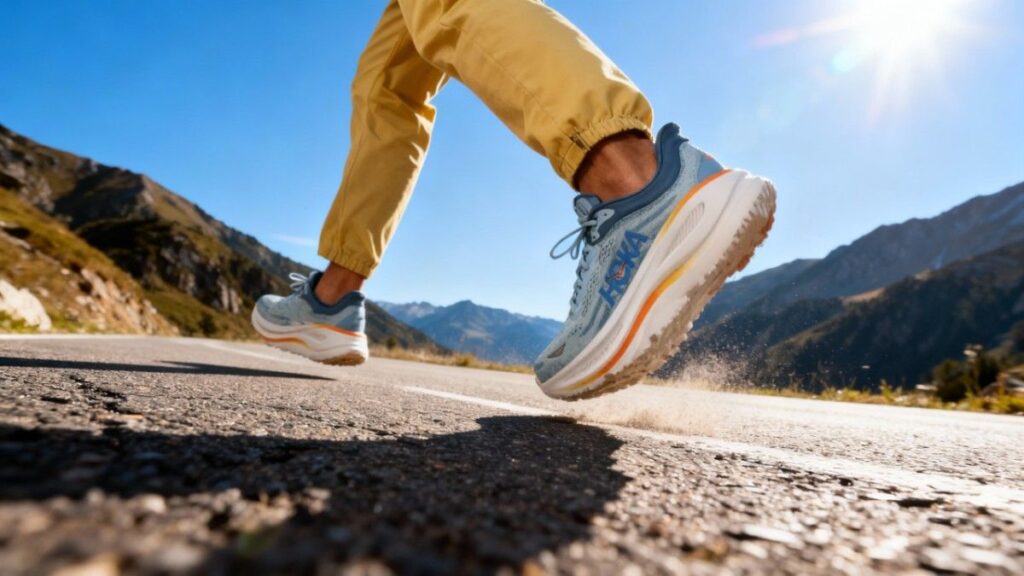
The HOKA Bondi 9 shows real drawbacks when you take it beyond steady road miles. I felt the HOKA Bondi 9 grow bulky on twisty singletrack and during faster tempo efforts, where its maximal foam likely blunts ground feel and slows quick foot turnover. Fit can be fiddly; the HOKA Bondi 9’s knit midfoot tended to feel snug on higher insteps and adding a thicker orthotic reduced forefoot volume enough that I had to consider a half size up. The HOKA Bondi 9 is not waterproof, so prolonged rain or repeated creek crossings soaked the upper and extended drying time in cool conditions.
Traction is tuned for pavement and packed dirt, and the HOKA Bondi 9 had limited bite on wet granite and loose technical rock, which made steep descents feel less secure. The very soft midsole also tends to compress under heavy lateral loads, so the HOKA Bondi 9 can feel unstable with heavier packs or sharp side impacts. Finally, the shoe’s plush stack and added weight raise metabolic cost on long approaches, so hikers who want nimble speed or rigid protection should consider more technical alternatives.
Best Alternatives of HOKA Bondi 9
Brooks Glycerin Max
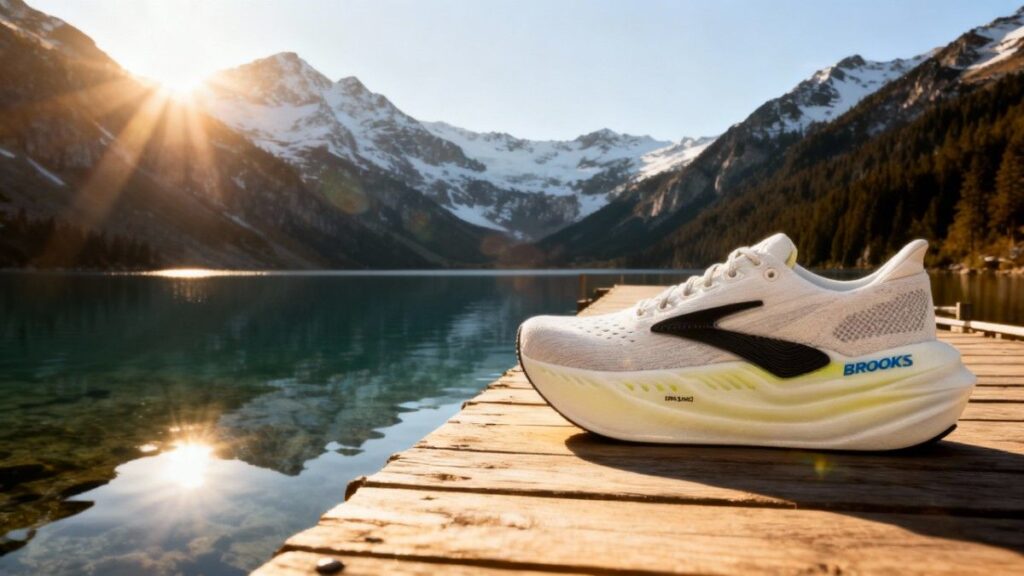
The HOKA Bondi 9 leans toward supreme, plush cushioning for long steady miles, while the Brooks Glycerin Max leans toward maximal cushioning with a touch more forward propulsion and everyday training versatility. The HOKA Bondi 9 carries a high-stack premium foam midsole and Durabrasion rubber outsole that prioritize soft landings and long wear. The Brooks Glycerin Max uses Brooks DNA Tuned foam and a GlideRoll-like geometry to deliver plush landings with slightly more rebound and toe-off feel.
Both shoes sit in a similar weight class near ~10.5 oz, so the ride differences stem from midsole tuning and outsole layout rather than mass. The trade-off is simple: HOKA Bondi 9 favors cushion-first comfort at the expense of quick responsiveness, while Brooks Glycerin Max tends to balance plushness with a livelier push. Buy the HOKA Bondi 9 if you want maximum cushioning for recovery and long walks; choose the Brooks Glycerin Max if you want similar comfort with more everyday training pep.
New Balance Fresh Foam X 1080 v14
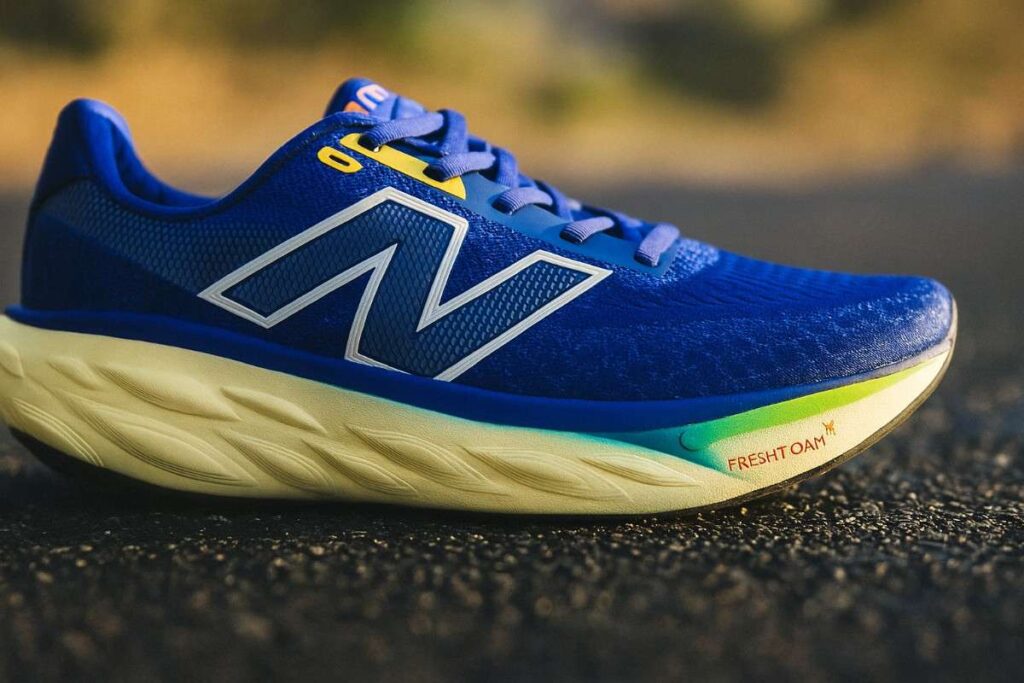
The HOKA Bondi 9 leans toward maximum, recovery-first cushioning for long steady miles, while the New Balance Fresh Foam X 1080 v14 leans toward a versatile daily trainer that treads the line between plush comfort and everyday responsiveness. The HOKA Bondi 9 uses a premium, high-stack foam and a rearfoot Active Foot Frame that likely promotes soft landings and stable heel feel, whereas the New Balance Fresh Foam X 1080 v14 relies on Fresh Foam X shaped for smooth transitions and a bit more roll through the stride.
Weight differences are small in practice: independent tests put the HOKA Bondi 9 near about 10.7 oz while New Balance lists the 1080 v14 at roughly 298 g (10.5 oz) for men, so ride tuning rather than mass drives the feel. The Bondi 9 pairs Durabrasion rubber and a breathable knit upper that favors ventilation, while the 1080 v14 offers an engineered mesh upper and Fresh Foam X midsole that tends to feel slightly more responsive. The trade-off is clear: HOKA Bondi 9 prioritizes cushioning and long-run comfort at the expense of snapping responsiveness, while New Balance Fresh Foam X 1080 v14 balances plushness with everyday liveliness.
Buy the HOKA Bondi 9 if your priority is low-impact recovery and long steady miles; choose the New Balance Fresh Foam X 1080 v14 if you want a cushioned daily trainer with more roll and everyday versatility.
Comparison of Best Alternatives
| Name | Weight (lbs / pair) | Waterproof (Membrane) | Best For | Price |
|---|---|---|---|---|
| HOKA Bondi 9 | 1.31 lb | No — structured knit/mesh upper. | Everyday road running, recovery runs, long steady miles (plush-cushion focus). | $175 |
| Brooks Glycerin Max | 1.31 lb | No — engineered mesh upper. | Road running with maximum protective cushioning and smooth transitions. | $200 |
| New Balance Fresh Foam X 1080 v14 | 1.31 lb | No — triple jacquard mesh upper. | Everyday running, all-day wear, walking, long runs (balanced plushness and daily versatility). | $164.99 |
Who Should Buy/Avoid HOKA Bondi 9
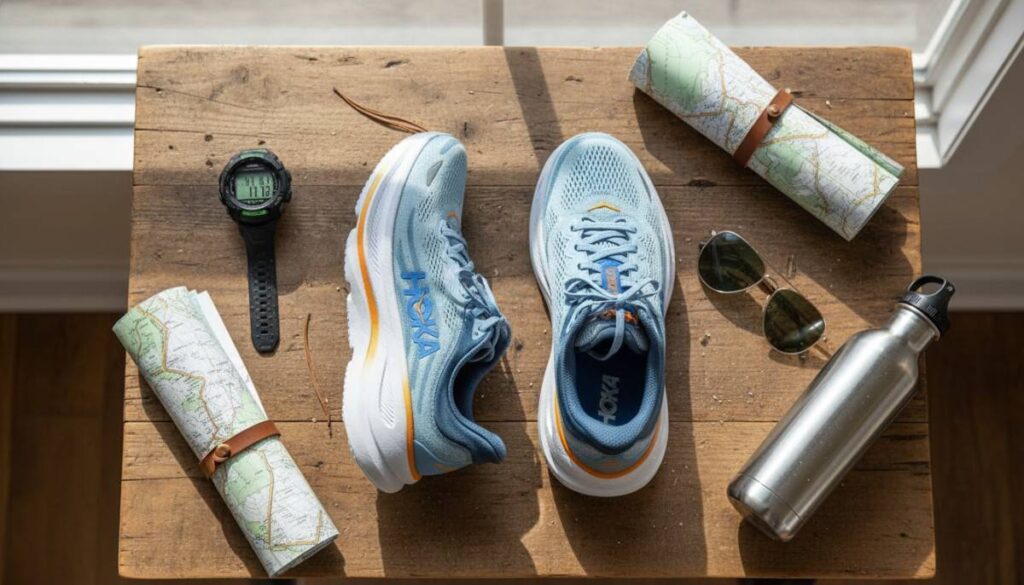
You Should Buy if
- You want a daily trainer that prioritizes plush cushioning for long steady miles; the HOKA Bondi 9 likely eases impact and tends to reduce road fatigue.
- You need a recovery shoe after hard workouts or long efforts; the HOKA Bondi 9’s high-stack foam makes easy days truly easy.
- You suffer from mild impact-related niggles and want roomy toe space plus a deep heel cup that tends to stabilize the rearfoot.
- You prefer a breathable, comfortable ride for daily walking and long pavement stretches and value long-lasting midsole resilience for high-mileage use.
You Should Avoid if
- You chase fast tempo runs or races where snap and responsiveness matter; the HOKA Bondi 9 tends to feel sluggish at higher speeds.
- You plan technical, rock-strewn trails or need rigid protection for heavy pack approaches; the HOKA Bondi 9 lacks a rock plate and firm shank.
- You require waterproof footwear for long wet-weather use; the HOKA Bondi 9 is not a waterproof, membrane-equipped model.
- You have very high insteps and plan to run with thick orthotics without trying sizing first; the HOKA Bondi 9 can feel snug with added inserts, so sizing may matter.
Ethan Marlowe is an experienced hiker and outdoor gear specialist based in Colorado. With over 7 years of hands-on experience trekking through the Rockies, Pacific Northwest, and East Coast trails, he delivers practical advice, expert gear reviews, and survival insights. His goal is to help hikers of all levels make smarter decisions on and off the trail.


